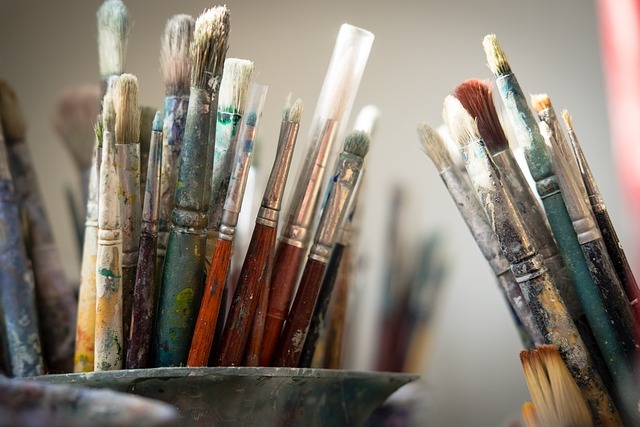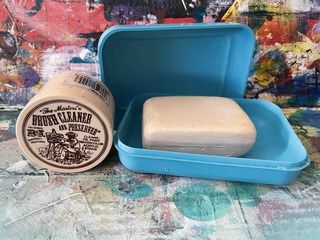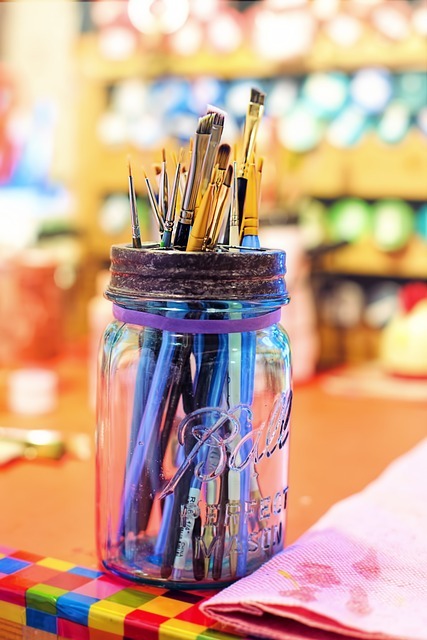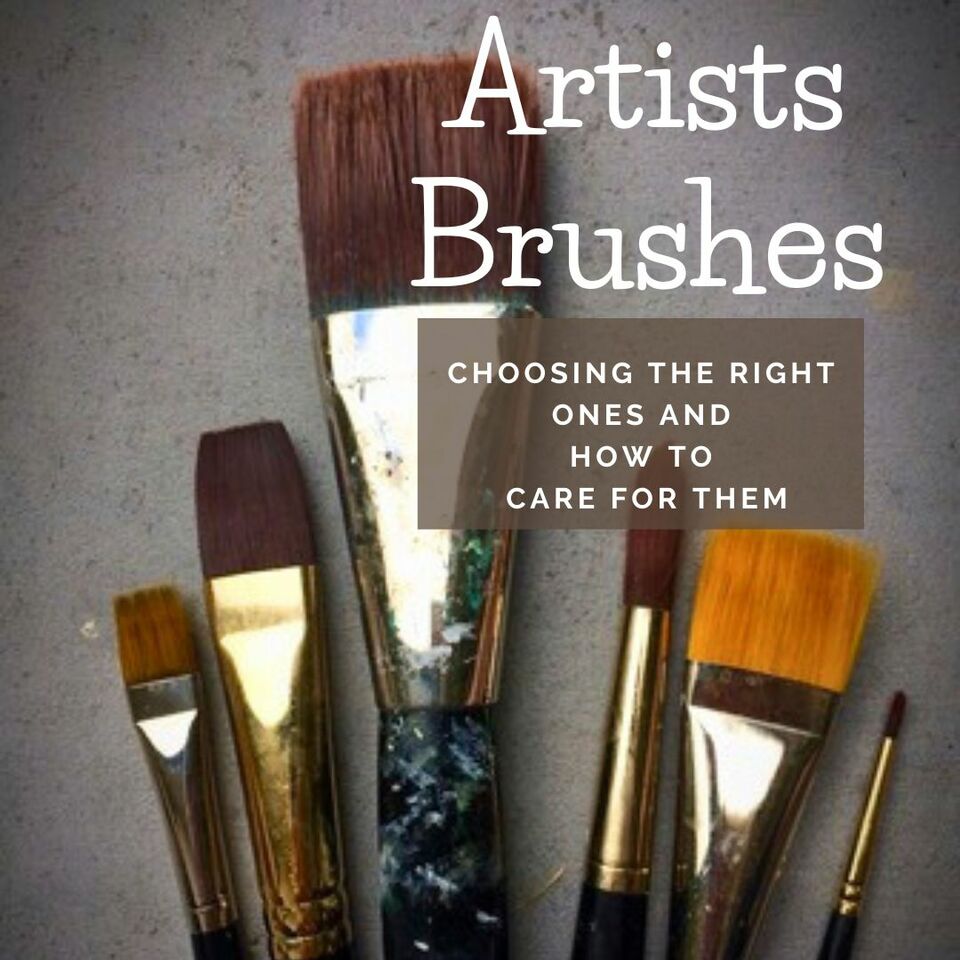Beginners Guide to Choosing the Best Brush for Artists
Throughout my career as an artist, coupled with my experience working in an art supply store, I have gained extensive familiarity with various paint types and their corresponding brush requirements.
And when teaching art classes, one common question that arises is which brushes are best suited for specific painting styles or techniques. In this article, I'll provide a breakdown of my preferred brushes and some valuable tips for taking care of them.
Watercolour Brushes
Choosing the right brushes is crucial for a good painting experience if you're into watercolour painting. Here's a closer look at what makes Sable brushes a top choice for watercolour artists.
Sable Brushes for Watercolour
Sable brushes are made from natural animal hair and have an exceptional talent: holding water. This unique ability is super essential in watercolour painting because it lets you control the flow of paint. When you dip a Sable brush in water and paint, it holds onto the mix really well.
Another neat thing about Sable brushes is their "belly." When the brush gets wet, this part expands, giving the brush a nice bounce and snap. This means you can have more control when you're painting. It's especially handy if you like doing detailed work in your watercolour paintings.
A Money-Saving Option: Sable/Nylon Mix
If you want good quality without spending a lot of money, consider Sable/nylon mix brushes. These brushes give you the best of both worlds. You get the water-holding power of Sable and the toughness of nylon bristles. They're versatile, so you can use them for different watercolour techniques. Plus, they last longer than pure Sable brushes and are more budget-friendly.
My Personal Pick: Da Vinci Caseneo Brushes
I personally use Da Vinci Caseneo brushes for my watercolour art. They're special because they're not made from natural hair. Instead, they're synthetic brushes designed to act like natural hair when it comes to holding water. The great thing about synthetic brushes like these is that they last a long time. Natural hair brushes tend to wear out faster, but synthetics keep their shape and performance for a long while. They're also usually cheaper, so you're getting a good deal.
In a nutshell, choosing the right brushes for watercolour is a big deal. Sable brushes are fantastic for their water-holding magic, but Sable/nylon mixes are a smart choice if you're on a budget. And if you want both quality and durability without breaking the bank, consider synthetic brushes like the Da Vinci Caseneo range. Your brushes play a significant role in how your artwork turns out, so pick the ones that suit your style and needs best.

Oil Painting Brushes
When it comes to oil painting, the brushes you choose can significantly affect the outcome of your artwork. Let's delve into the options:
Using Sable Brushes for Oil Painting
Believe it or not, Sable brushes can be handy for oil painting, depending on the effect you want to achieve. Bristle brushes are the way to go if you're aiming for visible brushstrokes in your artwork. These brushes can be made from either synthetic materials or hog hair. They have stiff bristles that leave distinct marks on your canvas, giving your painting texture and character.
Going for Bristle Brushes
If you prefer your brushstrokes to be visible in your oil paintings, you should opt for bristle brushes. These brushes are known for their firm and textured bristles, which can be synthetic or made from hog hair. The stiffness of bristle brushes allows you to create prominent brushstrokes on your canvas, adding depth and texture to your artwork.
The Smoother Finish with Nylon or Synthetic Brushes
On the other hand, if you're after a smoother finish in your oil paintings or need more flexibility to move the paint around, nylon or synthetic brushes are the better choice. These brushes provide you with more control over your brushwork. They allow you to blend colours seamlessly and achieve a polished look in your oil paintings. This is especially helpful when using impasto techniques, where you want to apply thick layers of paint.
In summary, the type of brushes you use for oil painting depends on your artistic goals. Bristle brushes are your best bet if you want visible brushstrokes and texture. However, nylon or synthetic brushes are the way to go if you prefer a smoother finish and more control. Your choice of brushes can significantly influence the style and quality of your oil paintings, so select them based on your artistic vision and preferred techniques.
Acrylic Brushes
When it comes to acrylic painting, your choice of brushes plays a crucial role in achieving the desired results.
I have a favourite supplier Rosemary & Co, who are based in the UK. Here's an overview of the brushes I prefer to use and the different types available:
Nylon Brushes for Acrylic Painting:
In my acrylic painting endeavours, I have a set of favourite nylon brushes (Shiraz range from Rosemary & Co) that I rely on. These brushes offer several advantages for acrylic artists. They are robust, maintaining their shape well, even after prolonged use. Additionally, they are exceptionally easy to clean, making the post-painting cleanup a breeze.
One notable feature of nylon brushes, especially relevant in acrylic art, is their ability to create a smooth finish. Unlike bristle brushes, which can leave visible brush marks on the canvas, nylon brushes allow you to achieve a more polished and mark-free surface. This attribute is often preferred in acrylic painting, where achieving a clean and uniform appearance is essential.
Types of Brushes for Acrylic Painting:
- Filbert Brush: A filbert brush has a narrow and flat shape, with bristles that are round at the tip, similar to an almond or fingernail. This versatile brush can be used to create both thin lines and broad strokes, making it a handy tool for various acrylic painting techniques.
- Flat Brush: As the name suggests, a flat brush has a flat profile. It can vary in width, from wide to narrow, and its bristle length can also differ. Look for a flat brush with springy bristles, as this characteristic enhances its versatility. Flat brushes are excellent for filling in large areas and can also produce fine lines when used on their narrow edge.
- Round Brush: The classic round brush features a sharp point, making it ideal for creating fine lines and intricate details in your acrylic paintings. This brush is a must-have for artists who need precision in their work.
- Other Brushes:
- Fan Brushes: These brushes are particularly useful for blending colours and creating specific textures in your acrylic artwork. They can help you achieve soft transitions and interesting effects.
- Mop Brushes: Mop brushes have a large capacity for holding paint, which is perfect for extensive washes and blending in watercolour. However, they might not be the best choice for acrylics due to their softness.
- Rigger or Liner Brushes: These brushes are thin with long bristles, allowing you to produce fine lines with a consistent width. They're perfect for detailed work, such as adding thin branches to trees or intricate lines in your painting. They're also handy for signing your name on your artwork.
- When it comes to acrylic painting, nylon brushes are a reliable choice, offering durability, shape retention, and the ability to create a smooth finish. The various brush types available, including filbert, flat, round, and specialty brushes like fan, mop, and rigger/liner brushes, provide artists with a wide range of options to suit their specific artistic needs and preferences.
If you're interested in eco-friendly practices, take a look at my tips ways to help save the world as an artist.

Taking care of your artist's brushes is crucial for their longevity and maintaining their performance. Here are some essential tips on maintaining your brushes:
Proper Cleaning with Brush Soap
Whether you use watercolour or oil painting brushes, proper cleaning is a must. Even when you think your brush is clean, residues of pigments can linger in the bristles. That's why I recommend using specially formulated brush soaps, like Da Vinci artist soaps. These soaps clean your brushes and condition the bristles, helping them keep their shape and last longer. This step is crucial for both watercolour and oil painting brushes.
Caring for Your Brushes
- Proper Storage: To prevent mould growth and maintain the quality of your brushes, store them upright. Keeping the handles dry is essential to prevent them from loosening or cracking over time.
- Rinsing Technique: Avoid submerging the entire brush, including the handle, when rinsing your brushes. Wet only the metal part, known as the ferrule, which holds the bristles. Submerging the handle can lead to damage over time.
- Thorough Cleaning: After each painting session, make sure to clean your brushes thoroughly with the appropriate brush soaps. This step removes any remaining paint or pigment, preventing it from hardening and affecting the brush's performance in future use.
- For Oil Brushes: When dealing with oil brushes, reshape them after cleaning. You can also apply a suitable oil, such as Linseed Oil or Pure Almond Oil, before storing them. This helps maintain the bristle's condition and prepares them for subsequent use. Remember to clean them before their next painting session.
- In summary, proper maintenance and cleaning are essential for preserving the life of your artist's brushes, regardless of whether you use them for watercolour or oil painting. Using specialised brush soaps like Da Vinci artist soaps ensures thorough cleaning and helps keep the bristles in good shape. Following these care instructions and proper storage techniques will ensure that your brushes continue to serve you well in your artistic endeavours.

To Wrap it Up
Let's emphasise the significance of choosing the right brushes and maintaining them properly in simple terms. Your brush selection greatly influences your art's outcome, so it's a critical choice. Additionally, taking good care of your brushes ensures they remain dependable tools for an extended period.
Think of your brushes as your artistic partners. Just as a chef relies on quality knives and a musician values a well-tuned instrument, you, as an artist, depend on your brushes. The right brush helps you create your artwork's desired strokes and effects.
Proper maintenance ensures these partners stay in top shape. Regular cleaning removes any lingering pigment that could affect your next project. Treating your brushes carefully ensures they remain loyal companions on your creative journey, always ready to enhance your artistry.
Take a look at my article on artist canvas too
